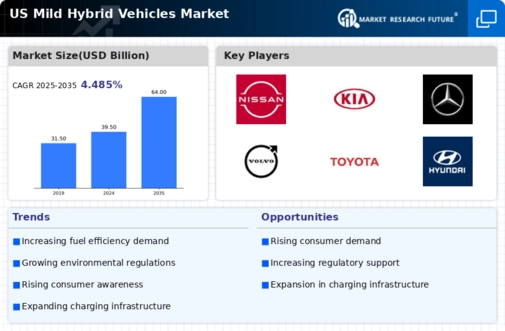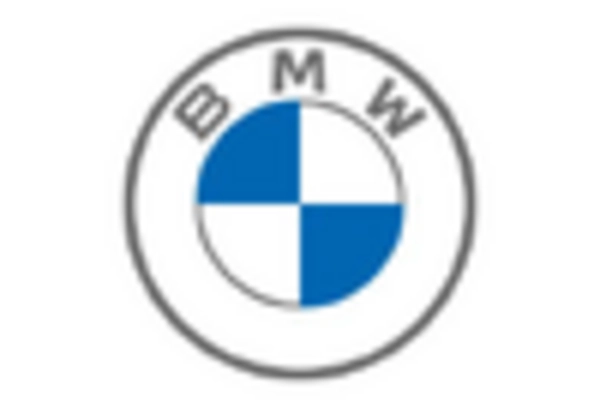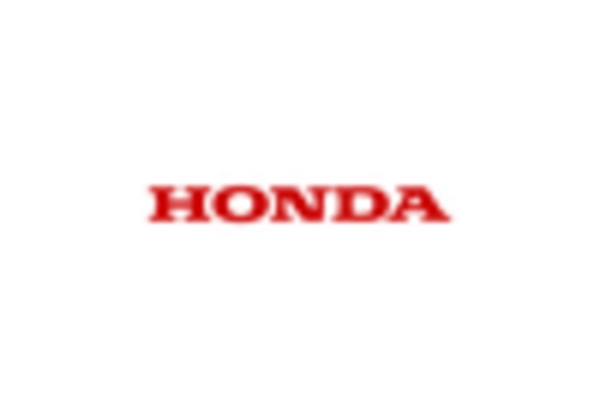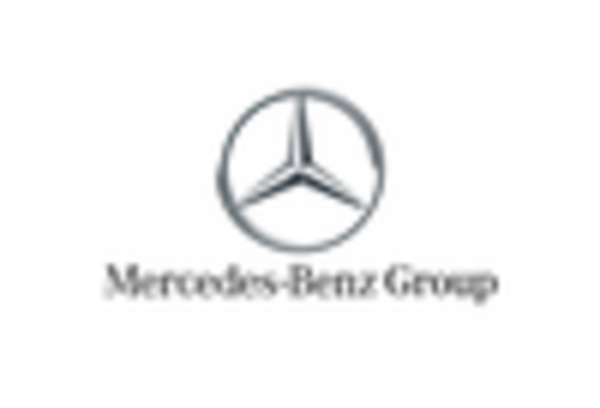Rising Fuel Efficiency Standards
The mild hybrid-vehicles market is experiencing a notable shift due to the implementation of stringent fuel efficiency standards in the US. Regulatory bodies are mandating automakers to enhance the fuel economy of their vehicles, which has led to increased interest in mild hybrid technologies. These vehicles typically offer improved fuel efficiency by utilizing a combination of an internal combustion engine and an electric motor. As a result, manufacturers are investing in the development of mild hybrid systems to comply with these regulations. The US Environmental Protection Agency (EPA) has set ambitious targets, aiming for a fleet-wide average of 54.5 mpg by 2025. This regulatory pressure is likely to drive growth in the mild hybrid-vehicles market, as consumers seek options that align with these standards.
Economic Incentives for Hybrid Adoption
Economic incentives play a crucial role in shaping the mild hybrid-vehicles market. Various state and federal programs are designed to encourage the adoption of hybrid technologies through tax credits, rebates, and grants. For instance, consumers may receive tax credits of up to $7,500 for purchasing qualifying hybrid vehicles, which can significantly reduce the overall cost. These financial incentives not only make mild hybrids more accessible but also stimulate consumer interest in environmentally friendly options. As the US government continues to promote clean energy initiatives, the mild hybrid-vehicles market is likely to see sustained growth, with an increasing number of consumers taking advantage of these economic benefits.
Consumer Preference for Sustainable Options
The mild hybrid-vehicles market is benefiting from a growing consumer preference for sustainable transportation options. As awareness of environmental issues increases, more consumers are seeking vehicles that offer lower emissions and better fuel economy. Mild hybrids, which provide a balance between traditional gasoline engines and full electric vehicles, are becoming an attractive choice for those looking to reduce their carbon footprint without sacrificing performance. According to recent surveys, nearly 60% of US consumers express a willingness to consider hybrid options when purchasing a new vehicle. This shift in consumer behavior is likely to propel the mild hybrid-vehicles market forward, as manufacturers respond to this demand by expanding their offerings in this segment.
Technological Integration in Automotive Design
The integration of advanced technologies in automotive design is significantly influencing the mild hybrid-vehicles market. Innovations such as regenerative braking, energy management systems, and lightweight materials are becoming increasingly prevalent. These technologies not only enhance vehicle performance but also contribute to reduced emissions and improved fuel efficiency. For instance, the use of regenerative braking allows mild hybrids to capture energy during braking, which can then be used to assist the engine during acceleration. This technological evolution is appealing to consumers who are becoming more environmentally conscious. As automakers continue to innovate, the mild hybrid-vehicles market is expected to expand, with a projected growth rate of approximately 15% annually over the next few years.
Infrastructure Development for Electric Vehicles
The development of infrastructure to support electric vehicles is indirectly benefiting the mild hybrid-vehicles market. As charging stations and related facilities become more widespread, consumers are increasingly comfortable with hybrid technologies that incorporate electric components. This infrastructure growth is essential for the overall acceptance of hybrid vehicles, as it alleviates concerns regarding charging availability and convenience. Furthermore, the US government has committed to investing billions in expanding electric vehicle infrastructure, which is expected to enhance the appeal of mild hybrids. As more consumers recognize the practicality of owning a vehicle with hybrid capabilities, the mild hybrid-vehicles market is poised for growth, potentially increasing market share by 20% in the coming years.

















Leave a Comment